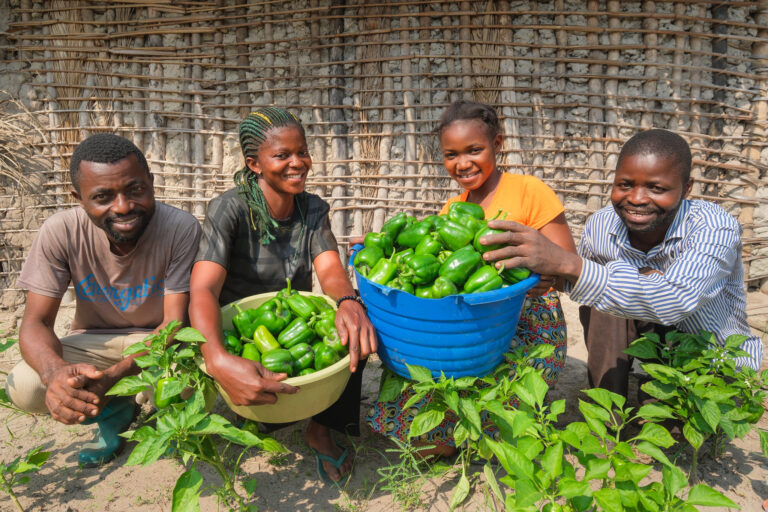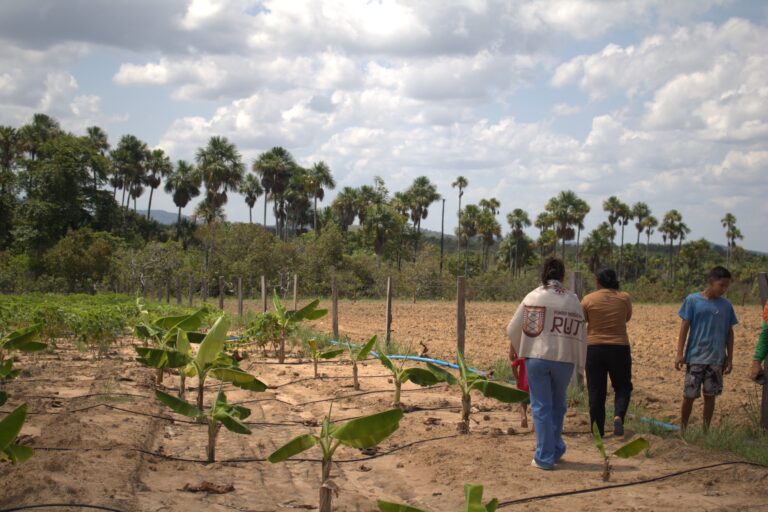- Twenty years ago science told policymakers that bioenergy – the burning of woody biomass – was a sustainable form of energy that was carbon neutral. The current United Nations carbon accounting system follows that guidance. However, new science has found the hypothesis to be wrong: bioenergy has been found to add significantly to carbon emissions.
- However, national delegations at the UN climate summit in Poland, COP24, as they wordsmith the Paris Rulebook, are stonewalling on the matter, doing nothing to close the bioenergy carbon accounting loophole. But nature can’t be fooled, which means that the undercounting of emissions could push the world past a climate catastrophe tipping point.
- Still, with the problem unaddressed, developed nations in the European Union and elsewhere continue burning woody biomass as energy, with the U.S., Canada and other nations happy to profit from the accounting error. Tropical nations like Brazil and Peru are eager to jump on the bioenergy bandwagon, a potential disaster for rainforests and biodiversity.
- Meanwhile, NGOs and scientists at COP24 have sought earnestly to alert the media and COP delegations to the bioenergy climate bomb and its looming risks, even going so far as to write language closing the loophole that could be inserted into the Paris Rulebook now being negotiated, but to no avail.

KATOWICE, Poland – Today, it’s being called the bomb that could explode the United Nations carbon climate emissions accounting system – and possibly destabilize the global climate.
When first conceived, this bomb was thought to be a boon: turn trees and woody biomass into wood pellets. Burn that woody biomass at power plants instead of coal to generate electricity. Plant more trees where the wood was harvested to offset the emissions produced by burning pellets. Then call it green and celebrate a sustainable way to reduce coal emissions.
Some 20 years ago, bioenergy produced from biomass was seen as the next new thing, and a valuable sustainable resource. And because it was deemed renewable, countries that burned biomass – wood pellets instead of coal – would not be required to count those carbon emissions. All that carbon dioxide was believed to be absorbed by the new tree seedlings.
For the purpose of United Nations carbon accounting policy, established under the Kyoto Protocol, the burning of biomass was established as, and is still considered, carbon neutral.
But in recent years, the supposed benign process has been revealed through a series of scientific studies and reports to be a dangerous fraud. It is the ticking bomb underlying the UN accounting system; a potentially large-scale hidden, unreported source of carbon emissions that helps developed countries to meet their Paris pledges.
That bomb will, analysts argue, blow up any chance that nations have of collectively meeting the goals of the Paris Agreement, which is to hold global temperature rise to 1.5 degrees Celsius (2.7 degrees Fahrenheit) above a 1900 baseline. We’ve already warmed about 1 degree Celsius (1.8 degrees Fahrenheit).
The margin of error to avoid climate catastrophe is small, but nature doesn’t tolerate errors and could respond to the cooked books with a vengeance.

Developed world complicity
Let’s be clear about this: delegates from developed countries are well aware of this dangerous loophole as they draft the Paris Rulebook that could be designed to remedy the problem at the 24th U.N. climate summit, or COP24, here in Katowice, Poland.
Yet they have ignored the pleas, the scientific data, the detailed charts identifying the danger, submitted by impassioned NGOs over the past week and a half.
The NGOs have even offered delegates specific Paris Rulebook language meant to close the bioenergy emissions loophole that would hold countries accountable for all the emissions they produce, not only those shown on the books.
But as the summit nears its end, no national delegation has adopted those solutions; the NGOs say they have no national allies willing to push for this change, which many view as critically important to avoiding climate disaster.
“Within the land-use negotiations, we are not even scratching the surface of accurate biomass accounting,” said Rachel Cleetus, a climate and energy policy director at the Union of Concerned Scientists.
“Biomass can [serve as] a transition to a low-carbon energy system, but we have to make sure the accounting rules take into consideration the full lifecycle of emissions and not just [declare the process] carbon neutral. Loopholes exist. So in the global endeavor to limit emissions, we are cheating ourselves. It looks good on paper while emissions get worse,” Cleetus said.

Bioenergy production rising; set to soar
The burning of biomass to produce energy has doubled in the past 10 years. While the global supply, and demand for, forest biomass for energy is predicted to increase more than 250 percent in the next 10 years, according to a report circulated by the Environmental Paper Network, an NGO which has lobbied at COP24 for biomass emissions accounting reform.
For all the talk about the expansion of wind and solar power, the growth of biomass energy, predominantly wood pellets and wood chips, is far greater. Pellet-production comes mostly from wood harvested in the Southeastern U.S. and Canada, but other countries – some in the tropics like Brazil and Peru – appear eager to provide biomass resources and profit from them.
Meanwhile, the United Kingdom and the European Union, especially Denmark, the Netherlands and Belgium are ramping up to burn more biomass for energy. South Korea and Poland are also building capacity to increase biomass burning.
“The EU does not want to fix these land-use rules that started with Kyoto … and [will] allow the loophole into the Paris Rulebook,” said Virginia Young with the Australian Rainforest Conservation Society; she closely follows the text revisions written into the rulebook. “Everyone says the land sector can be 30 percent of the [carbon sequestration] solution in lowering emissions, but not if these rules stay in place.”
Because burning biomass doesn’t count against a nations’ carbon emissions totals, Young said, nations that benefit from the current erroneous bioenergy counting methods have little incentive to invest further in real zero-carbon solutions such as wind and solar power.
And while advocates of the burgeoning biomass industry insist that the exclusive sources of woody biomass are sawmill leftovers, dead trees and fallen limbs, research indicates that actual forests are being logged, pelletized, exported and burned especially in countries like Estonia and Romania, home to some of the last old-growth forests in Europe. This deforestation will grow worse with increasing demand, impacting carbon emissions and biodiversity.

The European Union’s “own predictions say that [EU] forests will go from sequestering 400 million tons of carbon a year to 250 million tons of carbon by 2050,” said Dan Belusa, a Danish delegate and policy analyst with The Danish 92 Group, an NGO. “Bioenergy policies are primarily driving this deforestation. Companies are vacuuming the forests for whatever they can burn, and cutting trees, too. They are taking much more wood [to burn] than you can ever hope to replant.”
Belusa revealed this about his native Denmark, which takes pride in its green reputation: the country annually emits 45 million tons of carbon which is counted and reported to the UN. However, another 17 million tons of carbon emissions from burning biomass is counted, but not reported. Thus, on paper, Denmark emits nearly 30 percent less carbon than it’s putting into the atmosphere. This discrepancy is tallied the same way in other developed nations, multiplying the problem.
“If we want to really get serious about fighting climate change,” Belusa said, “then we need to maximize the carbon held in our forests and land, and we have to finally get rid of this fraudulent system of accounting for emissions and stop burning wood. But this issue is not even being raised here [at COP24].”
Part of the problem is habit: affluent developed nations have long believed they’re doing a good thing. When they convert their coal-fired power plants to burn wood, they are burning less coal. But because it requires more wood to produce the same amount of kilowatt hours as coal, those countries’ emissions are actually higher than if they kept burning coal. Of course, their emissions are technically, and officially, lower. But nature spots the lie.

Concern for accuracy and transparency
Last weekend, midway through the Kotowice climate summit, COP24 President Michal Kurtyka of Poland and Patricia Espinosa, general secretary of the UN Framework Convention on Climate Change, appeared together at a press conference.
In response to a Mongabay question about biomass carbon accounting loopholes and the fate of the Paris Agreement, both voiced concerns but only in broad generalities.
“We are talking about the transparency framework, and part of that is linked with accounting,” Kurtyka said. “Certainly the issue of proper accounting greenhouse gas emissions is very important. Part of the answer you will hopefully get from a successful result of this conference.”
Espinosa added, “I am not a scientist, but I would say that science is constantly evolving and giving us more information day by day. The whole point of this [Paris Rulebook] regime we’re trying to build, and the transparency and reporting obligations that countries need to follow, is really directed toward accuracy.”
The science has indeed evolved, as Mongabay report last spring, and findings have grown ever stronger, demonstrating that burning biomass and calling it carbon neutral is invalid.
Pegg Putt, a former member of Tasmania’s parliament and now with the Environmental Paper Network, an NGO, explained: “A number of years ago, scientists said to us, if you chop down a tree and burn it, and plant another tree, there is an equal offset. That sounded right.
“That is the enticing lie. But as you examine the issue, you realize the element of time is crucial. A tree doesn’t grow back very quickly, not as quickly as the immediate emissions. And it takes centuries to regenerate a mature forest. Scientists looked at [the biomass burning process] again and said, ‘We have a problem here.’”

In defense of biomass
The potential harmful repercussions of the UN’s biomass accounting loophole were likely exacerbated Wednesday when the Polish presidency launched a controversial forest initiative – the Ministerial Katowice Declaration on Forests. It called for global forest carbon stocks to be “maintained and further enhanced by 2050,” without a specific directive to reduce deforestation.
The Polish declaration, said Young, “falls in line with a broader push to offset continuing fossil emissions, and could result in massive increases in logging to expand the use of wood-based bioenergy combustion technology, leading to a decrease in natural carbon stocks.”
Not everyone agrees with that view, however, with some at COP questioning the truth of the bioenergy carbon loophole. Lithuania Green Party chair Remigijus Lapinskas is an ardent renewable energy advocate and president of the World Bioenergy Association.
He told Mongabay that “We need to understand the main principle. When you burn biomass, you are only releasing the carbon that wood absorbed before it was cut down. It puts back into the atmosphere CO2 that was already in the atmosphere. It does not increase the carbon concentration.”

However, this rationale ignores the fact that standing forests absorb a third of all global emissions. Without that ongoing carbon sink, global temperatures would be higher today. Still, Lapinskas sincerely believes that burning biomass is far better for the atmosphere than burning coal, scientific studies to the contrary. He also believes a bioenergy- industry perpetuated falsehood: that all the world’s woody biomass for energy derives from sawmill waste, dead trees and fallen limbs. No deforestation is taking place, he insisted.
Lapinskas did agree that logging is increasing in Latvia and Estonia, but praised wood as a low-cost, renewable energy source that should continue being counted as carbon neutral.
Wood is indeed a renewable resource because trees can be regrown, scientists concur. But in addition to storing carbon, long-standing forests protect biodiversity and provide ecosystem services such as soil carbon sequestration, and enhanced precipitation.
Escalating deforestation is doing grave harm to irreplaceable ecosystems, especially in the tropics, where trees are being cut to make way for cattle ranches, mining operations, and soy and oil palm plantations.
In future, the soaring demand for woody biomass by developed nations counting carbon, could drive far greater deforestation, and the forest-rich tropics of South America and Asia could end up being the next bountiful source of burnable wood.

Sailing into uncharted waters
Scientist Doreen Stabinksy takes the long view, having conceded that no biomass carbon accounting loopholes will be closed this week at COP24, no matter how the Paris Rulebook reads when finalized.
“We are in uncharted waters, and it’s for NGOs to try to chart this territory,” said Stabinsky, a professor of global environmental politics at the College of the Atlantic in Maine and a longtime observer at COPs. “We need to find our [policy] hooks, we need to figure out how we operate in these [political] spaces. Maybe in the next couple of years, we look at countries’ emissions, like the UK, and produce a scathing report that shows what they’re doing [burning biomass and ignoring the carbon and climate costs]. We need a lot of activism to push this along.”
Cleetus, with the Union of Concerned Scientists, called the issue “profoundly important. We need to accurately report on what’s happening with emissions on land. Right now, we are relying on land as a sink to absorb a lot of emissions the world is producing. And with biomass, we’re threatening those sinks, especially our forests.”
If nations somehow, someday agree to close the biomass loophole, the bioenergy incentive will disappear, said Belusa of Denmark. Countries will then reassess the means for meeting their Paris Agreement climate-reduction pledges, requiring greater investments in solar and wind energy, and placing more emphasis on protecting forests, rather than mining them for biomass.
“This makes me a little bit hopeful,” he said. “The EU has a target of getting to net zero [carbon emissions] by 2050. If serious about that, it would have to find new ways to reduce emissions, but also increase forest capacity to increase carbon sinks. If we get a COP decision that is strong on ambition, we will need to stop deforestation and start protecting more forests and protecting more land. We can’t burn our way out of climate change.”
Justin Catanoso, a regular contributor to Mongabay, is covering his fifth climate summit. Follow him on Twitter @jcatanoso.
FEEDBACK: Use this form to send a message to the author of this post. If you want to post a public comment, you can do that at the bottom of the page.















